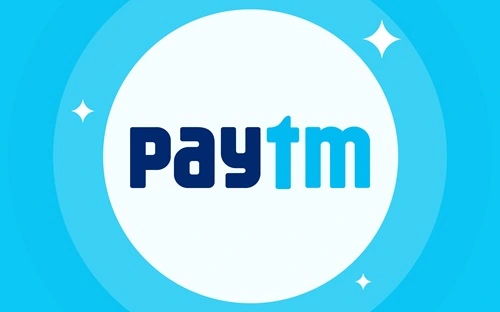Paytm, short for “Pay Through Mobile,” was founded in 2010 by Vijay Shekhar Sharma and has grown into one of India’s leading digital financial services platforms. Originally starting as a mobile recharge platform, Paytm has diversified its offerings to become a comprehensive ecosystem for payments, financial services, e-commerce, and more. As of today, Paytm operates as a super app, providing a wide range of services, including digital wallets, UPI (Unified Payments Interface) transactions, payment gateways, lending, and wealth management. This article delves into Paytm’s business model and explains how it generates revenue.
Overview of Paytm’s Business Model

Paytm operates on a B2C (Business-to-Consumer) and B2B (Business-to-Business) model, focusing on creating a one-stop solution for digital transactions and financial services. The core elements of its business model include:
- Payments Ecosystem: A digital wallet, UPI, and QR-based payments for seamless transactions.
- Financial Services: Offering lending, insurance, and investment services to users.
- E-commerce and Ticketing: Enabling users to purchase products, book tickets, and pay utility bills.
- Merchant Solutions: Providing payment gateways, POS (Point of Sale) devices, and business tools for merchants.
By integrating payments, financial services, and e-commerce, Paytm has established itself as a super app for Indian consumers and businesses.
Revenue Streams
Paytm generates revenue through a variety of channels, leveraging its vast ecosystem of services:
a) Payment Services
Paytm earns a significant portion of its revenue by enabling digital transactions for consumers and merchants.
- Wallet and UPI Transactions:
- Consumers use Paytm’s wallet or UPI to make payments for purchases, transfers, and bill payments.
- Paytm earns commission fees from merchants for processing payments, though UPI transactions are largely free for end-users.
- QR Code Payments:
- Paytm provides QR codes to merchants for accepting payments directly into their accounts.
- While small merchants use the service for free, Paytm earns revenue from larger businesses through premium services tied to QR-based payments.
- Payment Gateway Services:
- Paytm offers a payment gateway solution for businesses to process online transactions via credit cards, debit cards, UPI, and wallets.
- Revenue comes from transaction fees charged per transaction.
b) Merchant Subscriptions
Paytm provides merchants with value-added services to enhance their business operations. These include:
- POS Devices:
- Merchants rent or purchase Paytm’s Point of Sale devices (such as card readers and QR code scanners).
- Paytm charges monthly rental fees for these devices.
- Software and Business Tools:
- Tools like Paytm for Business and invoicing solutions are offered to merchants on a subscription basis.
- Merchants pay subscription fees for analytics, sales tracking, and other business insights.
c) Lending Services
Paytm has entered the lending sector through its Paytm Postpaid (buy now, pay later) service and loans for individuals and businesses.
- Consumer Lending:
- Paytm Postpaid allows users to make purchases on credit, with Paytm earning interest or late fees on repayment.
- Merchant Lending:
- Short-term loans are provided to merchants based on their transaction history and revenue. Paytm earns interest on these loans.
d) Wealth Management
Paytm offers wealth management services through Paytm Money, providing:
- Mutual fund investments.
- Stock trading and equity investments.
- Digital gold purchases.
Revenue Source:
- Commissions from mutual fund companies and stockbroking fees from investors.
e) Insurance and Financial Products
Through partnerships with insurance providers, Paytm offers a range of insurance products, such as:
- Health insurance.
- Life insurance.
- Travel insurance.
Revenue Source:
- Paytm earns commissions for every policy sold through its platform.
f) E-commerce and Ticketing
Paytm has a strong presence in e-commerce and ticketing, offering:
- Online Shopping:
- Paytm Mall allows users to purchase a wide range of products. Revenue comes from merchant commissions and logistics fees.
- Ticket Booking:
- Users can book tickets for movies, flights, buses, and trains. Paytm earns service fees and convenience charges per booking.
g) Advertising
Paytm earns advertising revenue by offering promotional opportunities to merchants and brands:
- Sponsored Listings: Businesses pay to have their products or services prominently displayed on Paytm’s platform.
- Targeted Ads: Brands can run campaigns targeting specific user segments on the app.
h) Utility Payments and Recharge
Users can pay utility bills, mobile recharges, and subscriptions through Paytm. Revenue is generated through:
- Commission fees from service providers.
- Small convenience fees for premium users.
Cost Structure
While Paytm generates revenue through multiple streams, its operations involve significant costs:
a) Technology and Infrastructure
- Maintaining its digital wallet, UPI system, and payment gateway infrastructure.
- Investments in AI, machine learning, and cybersecurity.
b) Customer Acquisition
- Heavy spending on marketing and cashback offers to attract new users and retain existing ones.
c) Regulatory Compliance
- Costs associated with adhering to RBI regulations and maintaining KYC (Know Your Customer) standards.
d) Merchant Onboarding
- Expenses related to onboarding merchants, providing POS devices, and offering customer support.
Unique Features Driving Revenue Growth
a) Super App Ecosystem
Paytm’s integration of payments, financial services, and e-commerce creates a one-stop solution for users, encouraging engagement and retention.
b) Focus on Tier 2 and Tier 3 Cities
By targeting underbanked areas, Paytm has expanded its user base significantly, especially in Tier 2 and Tier 3 cities.
c) Merchant-Centric Approach
Paytm’s value-added services and flexible payment solutions attract a vast network of merchants, driving revenue.
d) Partnerships and Collaborations
Collaborations with banks, NBFCs, and insurers have helped Paytm expand its offerings, creating additional revenue streams.
Challenges and Opportunities
Challenges
- Intense Competition: Competing with platforms like PhonePe, Google Pay, and Amazon Pay in the digital payments space.
- High Operational Costs: Expenses related to cashback programs, marketing, and technology investments.
- Regulatory Constraints: Adhering to government and RBI guidelines, especially in lending and payments.
Opportunities
- Financial Inclusion: Expanding services in rural areas to cater to underbanked populations.
- International Expansion: Entering new markets in Southeast Asia and the Middle East.
- Digital Lending Growth: Increasing adoption of Paytm Postpaid and merchant loans.
- Wealth Management: Growing interest in investment products like mutual funds and stock trading.
Financial Overview
As of its latest reports, Paytm has shown strong revenue growth, driven by its payments business, financial services, and merchant solutions. Although the company has faced profitability challenges, its focus on diversifying revenue streams and scaling operations positions it for long-term success.
Conclusion
Paytm’s business model demonstrates its strength as a comprehensive financial ecosystem, offering services that cater to individual users and businesses alike. By continuously innovating and expanding its offerings, Paytm has established itself as a leader in India’s fintech space. With increasing adoption of digital payments and financial services, Paytm is well-positioned to sustain its growth and further solidify its market dominance.

